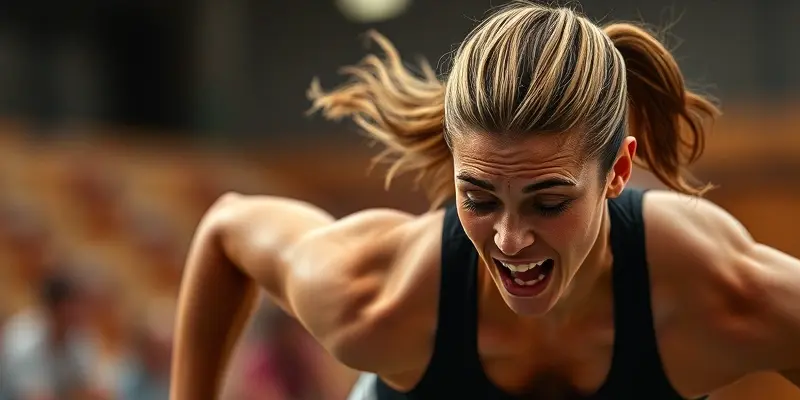Mastering Squat Technique for Recovery and Injury Prevention
Whether you’re an aspiring athlete, a fitness enthusiast, or someone striving for lifelong mobility, the squat is a powerhouse exercise. But it’s also one where a small mistake can spell weeks of recovery—or worse, a setback on your fitness journey. As GymPulse Club’s lead trainer and content writer, I’ve seen firsthand how disciplined squat form supports better results, fewer injuries, and faster recovery. Let’s break down what truly matters.
Why Squat Technique Matters
Squats aren’t just for powerlifters—they’re foundational for nearly every fitness goal: building strength, boosting flexibility, even preventing injuries during daily activities. Yet, thousands of athletes end up sidelined each year because of preventable squat errors. Mastering the details of your technique is your best insurance policy for staying healthy and strong.
How to Squat Safely: The Essential Steps
Perfect form isn’t negotiable—so let’s walk through it:
- Foot Position: Start with your feet shoulder-width apart, toes pointed out slightly (think “11 and 1 o’clock” on a clock face). This sets up solid knee alignment.
- Core Engagement: Before you move, brace your core. Imagine “zipping up” your abs—this keeps your spine stable and pain-free.
- Hip Hinge and Descent: Kick your hips back and down like you’re lowering into a chair. Your chest stays up and your spine neutral.
- Depth and Alignment: Ideally, your thighs finish parallel or just below parallel to the ground. Only squat as deep as your flexibility and injury history safely allow.
- Ascent and Breathing: Push through your heels and mid-foot. Breathe in on the way down, exhale with controlled power as you stand.
Mistakes to Avoid
- Rounding your back: This strains your lower spine—think of a credit card being bent repeatedly.
- Knees caving in: Not only does this look painful, it’s a top risk for ACL injuries.
- Heels off the floor: This means you’re unstable and your knees will take the hit.
If you feel your form slipping, ditch the weight and rebuild the basics. No shame in slow progress—injuries take far longer to heal.
Preventing Injuries: Your Squat Safety Checklist
Even advanced athletes trip up with the squat if they rush or overload the bar. Stay smart by:
- Warming up every time. Use dynamic stretches and easy practice squats.
- Progressing gradually. The best athletes add weight in controlled, small increments.
- Watching yourself. A mirror or quick video helps catch subtle technique slips before they cause problems.
Common Squat Injuries
- Knee pain: Often from knees drifting inward (valgus collapse).
- Lower back strains: Usually from rounding or over-arching the spine.
- Hip impingement: Caused by squatting too deep without necessary mobility.
Recovering from Squat-Related Injuries
If you do get hurt, don’t panic—be proactive:
- Acute strains: Use RICE (Rest, Ice, Compression, Elevation) for the first 72 hours.
- Rehab with care: Controlled, low-load squats maintain mobility and speed up healing.
- Know when to call in the pros: If pain lingers or worsens, see a physical therapist or a qualified trainer.
Remember: Rehabilitation is as much about patience as it is about action. For a detailed guide on how to manage this phase effectively, check out our injury recovery checklist.
Supporting Your Recovery: Nutrition, Gadgets, and Mindset
Nutrition Essentials
- Protein: Vital for muscle repair—aim for 1.6–2.2 g/kg body weight daily if you’re training hard.
- Anti-inflammatories: Think leafy greens, berries, and omega-3-rich fish.
- Hydration: Recovery slows if you’re dehydrated.
Smart Tools and Recovery Gear
- Resistance bands: Encourage correct knee tracking in warm-ups or rehab.
- Foam rollers and massage guns: Boost blood flow and decrease soreness.
- Weightlifting shoes: Can improve squat stability and depth if ankle flexibility is a limiting factor.
Mindset Matters
- Set realistic goals: Small wins build big confidence.
- Use visualization: Picture yourself moving well—mental rehearsal aids physical recovery. Learn more about the power of visualization for healing.
- Track your progress: Logging your rehab and training builds motivation and discipline.
The Takeaway: Technique + Recovery = Long-Term Success
At GymPulse, I believe relentless focus on technique and recovery transforms not only your squat, but your entire athletic future. Every perfect rep strengthens your body and safeguards your progress. So next time you step under the bar, remember: perfect form today saves you weeks of recovery tomorrow.
Prioritize your form. Respect your recovery. Your future self will thank you—both in and out of the gym.
Ready to level up your squat or bounce back from an injury? Share your thoughts, experiences, or questions in the comments below. Let the GymPulse Club community help you stay strong, healthy, and injury-free!

